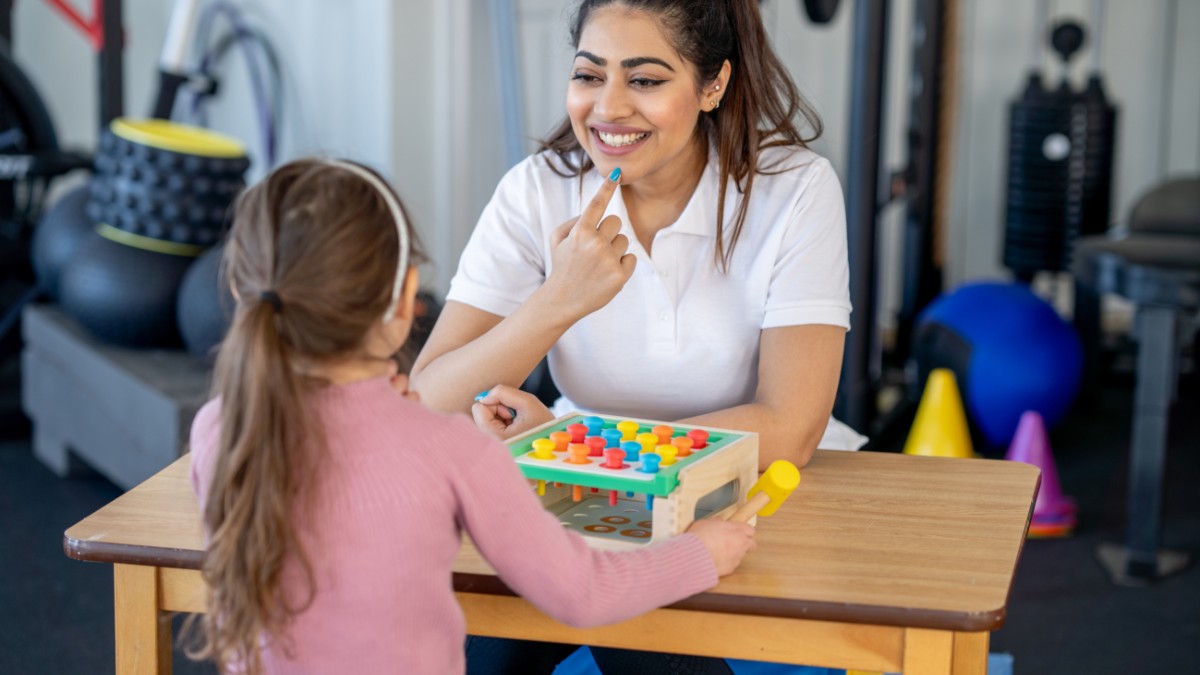Key Points:
- Autism social cues are non-verbal or verbal signals that help individuals understand the social context in interactions and difficulties in interpreting them are common in autism.
- People with autism often struggle to read facial expressions, tone of voice, body language, and other subtle social cues that guide conversations.
- Through strategies like ABA therapy, individuals with autism can improve their ability to recognize and respond to social cues, leading to more successful social interactions.
Social interactions can be challenging for individuals with autism, particularly when it comes to understanding and responding to social cues. This can make it difficult for individuals with ASD to engage with others, with studies even indicating that up to 50% of autistic individuals can experience social anxiety.
Autism social cues are the subtle, non-verbal signals—such as facial expressions, body language, or tone of voice—that guide how we navigate conversations and social situations. For those with autism, these cues are often difficult to interpret, which can lead to misunderstandings and social awkwardness. Recognizing and improving the ability to understand these cues is key to fostering meaningful relationships and reducing social isolation. Setting up an autism classroom with supportive environments and tailored strategies can also help students practice and enhance their understanding of these cues in a structured setting.
In this article, we will explore the challenges that individuals with autism face when it comes to social cues, discuss the impact of these challenges, and offer practical tips for improving social understanding.

For those with autism, these cues can be overwhelming or easily misinterpreted, making social interactions stressful and confusing.
Why are Autism Social Cues Difficult to Understand?
The difficulties individuals with autism face in interpreting autism social cues stem from the nature of the condition itself. Autism spectrum disorder (ASD) affects brain development in ways that influence social communication and sensory processing. Here are several factors contributing to challenges in understanding social cues:
1. Limited Theory of Mind
The “Theory of Mind” refers to the ability to understand that others have thoughts, feelings, and perspectives that differ from our own. Individuals with autism often have difficulty with this concept, which makes it harder to interpret other people’s emotional states, intentions, or social cues.
For example, someone with autism may not recognize that a friend is upset just because they are frowning or have a tense posture. This can lead to social misunderstandings or missed opportunities to offer support.
2. Sensory Sensitivities
People with autism are often sensitive to sensory input, such as light, sound, and touch. This heightened sensitivity can make it challenging to focus on and process social cues in a busy, overwhelming environment.
For example, if a person is bothered by bright lights or loud noises, they may miss subtle social signals like a change in tone of voice because they are too focused on the sensory distractions around them.
3. Difficulty with Non-Verbal Communication
Non-verbal communication—such as body language, facial expressions, and eye contact—is crucial for understanding social situations. However, individuals with autism may struggle to pick up on these non-verbal signals. They may have difficulty reading others’ facial expressions or interpreting gestures, which can make social interactions confusing.
How to Improve Understanding of Autism Social Cues
While understanding autism social cues may not come naturally for individuals with autism, there are strategies and interventions that can help improve their ability to interpret and respond to these signals. Below are several effective tips to help enhance social communication:
1. ABA Therapy (Applied Behavior Analysis)
One of the most effective interventions for improving social skills in individuals with autism is ABA therapy. ABA is a highly structured and evidence-based approach that teaches individuals with autism how to improve specific behaviors, including the ability to understand and use social cues. ABA therapy can involve:
- Role-playing: Practicing social interactions in a controlled, supportive environment.
- Modeling: Demonstrating the correct way to respond to social cues, such as using appropriate facial expressions or gestures.
- Reinforcement: Rewarding the individual for recognizing and responding to social cues appropriately.
By working with an experienced therapist, individuals can practice and internalize social communication skills, which leads to more successful social interactions.
2. Social Skills Training
Social skills training focuses specifically on helping individuals with autism learn how to interact effectively with others. Training programs often include:
- Recognizing emotions: Teaching how to identify and interpret facial expressions, body language, and tone of voice.
- Making eye contact: Practicing appropriate eye contact during conversations to signal engagement and interest.
- Turn-taking in conversations: Practicing listening skills and learning to wait for a chance to speak, promoting back-and-forth communication.
Social skills training often involves repetition, role-playing, and real-world practice to build confidence and competence.
3. Use of Visual Supports
Many individuals with autism benefit from visual aids that reinforce social cues. Visual supports can include:
- Social stories: Written or visual narratives that explain social situations and the appropriate ways to respond.
- Emotion cards: Cards with pictures of different facial expressions that help individuals recognize various emotions.
- Video modeling: Videos showing individuals successfully navigating social interactions can provide clear examples of how to respond to social cues.
By offering concrete visual references, these tools help individuals with autism learn to associate certain cues with specific responses.
4. Encouraging Positive Reinforcement
Positive reinforcement is an essential technique for motivating individuals with autism to use appropriate social cues. When they correctly recognize and respond to social signals, offering praise or rewards reinforces the behavior. This builds the individual’s confidence and encourages them to continue practicing these skills.
For example, if an individual notices that someone is sad and offers comfort, reinforcing this behavior with praise strengthens their understanding of social empathy.
5. Creating a Structured Environment
Creating a structured, predictable environment can help individuals with autism feel more comfortable and focused during social interactions. This might include:
- Providing clear routines that give individuals a sense of control over social situations.
- Reducing sensory overload by minimizing distractions like noise or bright lights.
- Establishing clear expectations for social behavior, such as taking turns or asking for permission to speak.
A structured environment helps reduce anxiety and creates the conditions necessary for learning and practicing social cues.
 How to Support Autistic Individuals With Social Cues
How to Support Autistic Individuals With Social Cues
Supporting autistic individuals with social cues involves creating an environment where they feel understood and empowered to interact more confidently. Social cues can be tricky for some, but with the right strategies, they can be better equipped to navigate social situations.
Here are some ways to offer support:
- Use clear and direct communication: Speak plainly and avoid relying too much on nonverbal cues like sarcasm or indirect hints. This helps reduce confusion and fosters understanding.
- Teach social skills explicitly: Role-playing can be a great way to practice recognizing facial expressions, body language, and turn-taking in conversations.
- Provide visual aids: Social stories or visual guides can help reinforce social expectations and explain how to interpret various social cues.
- Offer feedback gently: If an individual misses a cue, provide gentle, constructive feedback in a way that is non-judgmental, so they don’t feel discouraged.
- Encourage self-awareness: Helping individuals understand their own social behavior and how it may affect others can build confidence in navigating social interactions.
- Create safe, predictable environments: Providing structured, predictable settings can help reduce anxiety, making it easier to focus on social interactions rather than worrying about unexpected changes.
With patience and consistent support, autistic individuals can gradually learn to recognize and respond to social cues, improving their social interactions. This process often involves practicing various communication strategies, receiving constructive feedback, and gaining self-awareness in different social settings.
Learn More About Autism Social Cues With ABA Therapy in Maryland
If you’re looking for support with autism social cues, ABA therapy can be a highly effective solution. At Crown ABA, we specialize in providing personalized ABA therapy to children and adults with autism in Maryland.
Our team of skilled ABA therapists in MD works closely with families to develop tailored plans that focus on improving social communication, enhancing social skills, and helping individuals with autism successfully navigate social interactions. Whether you’re looking for in-home therapy or center-based support, we’re here to help.
Learn how ABA therapy can make a positive difference in your loved one’s life. Reach out today to schedule a consultation!





